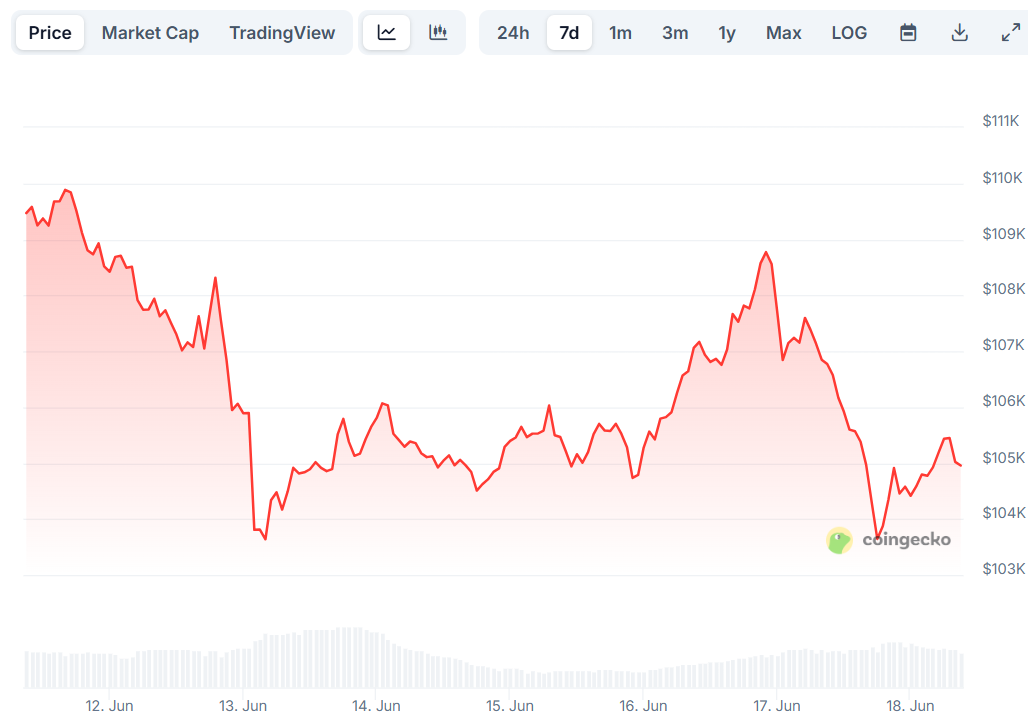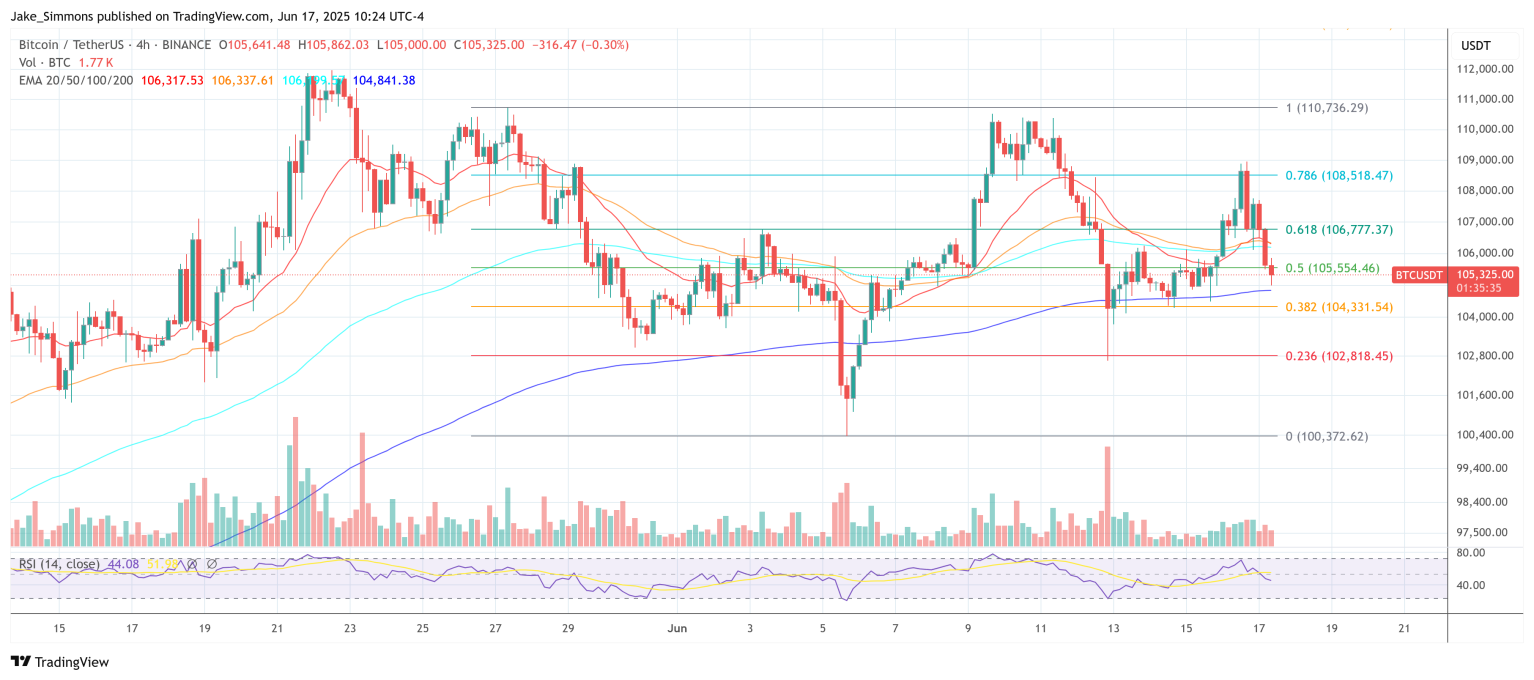TLDR
- Bitcoin trades near $105K as analysts eye potential move to $150K or decline to $97K support
- Global liquidity trends are the key factor determining Bitcoin’s next major price direction
- IBCI indicator suggests market is in transition phase, not cycle exhaustion
- Exchange trading volumes have dropped to multi-year lows despite high prices
- August debt ceiling issues could create market volatility for crypto assets
Bitcoin continues to trade near all-time highs around $105,000, but the path forward depends on one critical factor according to market analysts. Trader Josh Olszewicz warns that Bitcoin’s bullish setup is walking a macroeconomic tightrope.

The cryptocurrency has maintained strength near record levels despite the Federal Reserve not cutting interest rates. This resilience comes from an unexpected source that could determine whether Bitcoin reaches $150,000 or faces a major correction.
Olszewicz points to global liquidity as the determining factor for Bitcoin’s next move. While the Fed hasn’t pivoted to easing policy, US and global liquidity metrics have started trending upward through reverse repo operations and Treasury General Account activity.
Macro Monday: Status Quo for Markets
Sponsored by @krakenpro
Timestamps
00:00 Macro Data
12:00 TA & Charts pic.twitter.com/wy4eDqzwPW— #333kByJuly2025 (@CarpeNoctom) June 16, 2025
Current liquidity conditions remain fragile but supportive. When reverse repo facilities drain and the Treasury General Account spends down, both actions help increase market liquidity.
The trader noted that both metrics are trending in the right direction, providing enough support to keep risk assets like Bitcoin elevated. This differs from the harsh tightening periods seen in 2018 and 2022.
Bitcoin’s technical structure remains constructive as it fights off selloffs near all-time highs. The asset has resisted meaningful breakdowns and continues reclaiming key technical levels.

From a technical perspective, $97,980 represents the key downside level to monitor if Bitcoin falters. On the upside, analysts see $122,000 as a potential pit stop before reaching the $150,000 range.
Market Cycle Analysis Points to Ongoing Bull Phase
The Bitcoin Cycle Indicator (IBCI) provides additional context for the current market phase. CryptoQuant analyst Gaah notes the IBCI surged above 75% during Bitcoin’s rally from late 2023 to early 2024.
Following the recent price correction, the IBCI has stabilized around 50%, which traditionally represents a neutral zone. This level often precedes major trend changes in Bitcoin’s market cycle.
Historical data shows Bitcoin’s bullish phases typically end only when the IBCI reaches and remains in the 100% zone. Since this condition hasn’t been met, the current consolidation could set up another upward move.
The lack of extreme sentiment in either direction supports the view that the market is still evolving rather than approaching a cycle peak. If Bitcoin pushes higher while the IBCI trends back toward 75-100%, it may indicate a return to the distribution zone.
Exchange Activity Shows Institutional Dominance
Trading activity data reveals interesting patterns in the current market environment. Despite Bitcoin trading near historical highs, spot volume across centralized exchanges has dropped to multi-year lows.
While spot Bitcoin ETFs have shifted some volume away from traditional exchanges, the data also reflects limited retail engagement. Current market participation appears more aligned with institutional players and long-term holders.
These subdued volumes are not typical of euphoric market phases. Instead, they indicate measured participation that may delay the formation of a local market top.
The reduced retail interest contrasts with institutional activity that continues supporting Bitcoin near record price levels. This dynamic could change if renewed retail engagement emerges.
Several risk factors could disrupt Bitcoin’s current setup. August presents a potential debt ceiling crunch that could impact market liquidity conditions.
Inflation data stability remains crucial for Federal Reserve policy decisions. The central bank needs three to six months of sustained 2% inflation readings before considering rate cuts.
If liquidity conditions deteriorate or rates increase unexpectedly, Bitcoin could face downward pressure. The reverse repo facility reaching zero could create liquidity issues requiring quantitative easing measures.
At press time, Bitcoin traded at $105,325, maintaining its position near all-time highs as markets await the next catalyst for direction.






